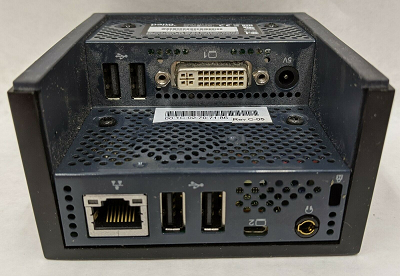Identifying different Pano generations and revisions
The first generation (G1) Pano was based on the largest Xilinx Spartan-3E family chip and supported a single VGA monitor.
The second generation (G2) was based on a large Xilinx Spartan-6 and supported two monitors.
Finally there is a rare version of the G2 which only supported a single DVI monitor which we call the G1 plus.
| Generation | FPGA | Flash | RAM | Block RAM | Ethernet | USB ports |
USB Controller |
Audio in |
Monitors |
|---|---|---|---|---|---|---|---|---|---|
| G1 | Spartan 3 XC3S1600E-5 |
1 MB | 32 MB | 648kBits / 72K bytes |
10/100 | 3 | Yes | Yes | 1 x VGA DB15 |
| G1 Plus | Spartan 6 XC6SLX100-? |
8 MB | 128 MB | 4,824 kBits / 536k bytes |
10/100/1000 | 4 | No | No | 1 x DVI |
| G2, Rev B | Spartan 6 XC6SLX150-2 |
16 MB | 128 MB | 4,824 kBits / 536k bytes |
10/100/1000 | 4 | No | No | 1 x DVI 1 x Micro HDMI |
| G2, Rev C | Spartan 6 XC6SLX100-3 |
8 MB | 128 MB | 4,824 kBits / 536k bytes |
10/100/1000 | 4 | No | No | 1 x DVI 1 x Micro HDMI |
| Fujitsu DZ22 | Spartan 6 XC6SLX150-? |
16 MB | 128 MB | 4,824 kBits / 536k bytes |
10/100/1000 | 4 | No | Yes | Includes 22 inch LCD 1 x external DVI |
| FPGA | Equlvalent Logic Cells |
Distributed RAM KBits |
Block RAM KBits |
18 x 18 Multipliers or DSP slices |
DCMs |
|---|---|---|---|---|---|
| XC3S1600E | 33,192K | 321 | 648 | 36 | 8 |
| XC6SLX100 | 101,261K | 976 | 4824 | 180 | 12 |
| XC6SLX150 | 147,443K | 976 | 4824 | 180 | 12 |
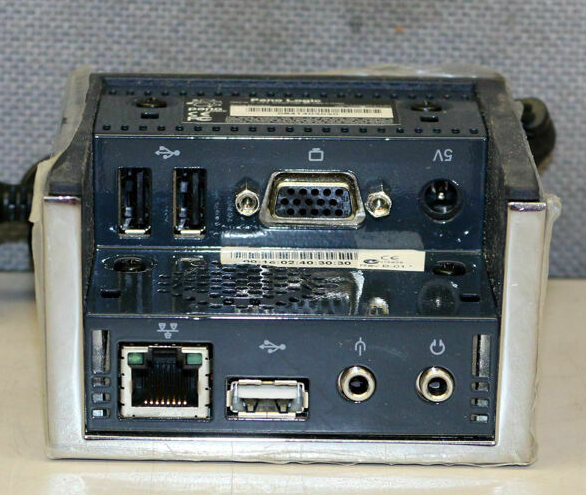
The first generation (G1) Pano was based on the largest Xilinx Spartan-3E family chip and supports a single VGA monitor, 3 high speed (2.0) USB ports, 10BASE-T/100BASE-T Ethernet, audio input, and audio output.
The second generation supports two monitors, 4 high speed (2.0) USB ports, gigabit Ethernet, and audio output. The second generation does not have an audio input.
There are three major revisions of the second generation Pano with Rev B & C being the most common.
Revision A and B of the G2 devices were based on the Spartan-6 XC6SLX150-2 which is the largest chip in the family. Revision C is based on the smaller XC6SLX100-3 which is still quite large by hobbyist standards. The XC6SLX100 has fewer configurable logic blocks (CLBs) than the XC6SLX150, but the rest of the resources (on chip block RAMs, DSPs, etc) are the same. It is interesting that the Rev C uses a higher speed grade FPGA than the Rev B.
As far as is known both revisions are identical other that size of the FPGA and SPI chips. Any design that fits in the Rev C should also work on earlier revisions.
Of course the bit stream must be generated for the correct chip.
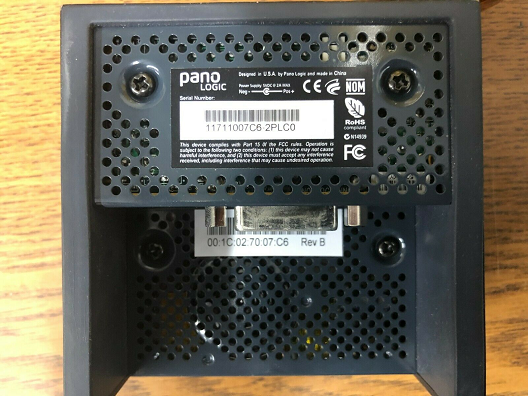
This is the most desirable revision of the G2 since it has has the largest FPGA and SPI flash chips.
This revision can run all known projects for the second generation G2 including Linux.
The device revision should be printed on a stick on label with the MAC address.
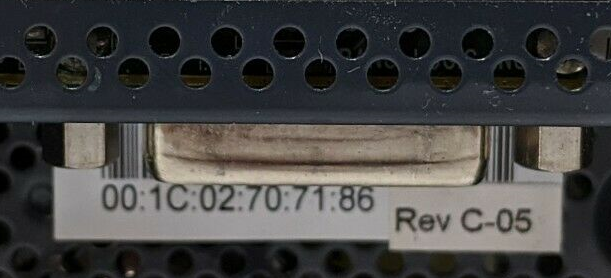
This revision can run all known projects for the second generation G2 except Linux.
For some reason the DDR on rev C does not work for Linux. The SPI flash is large enough to support Linux with compression if the DDR issue is resolved.
The device revision should be printed on a stick on label next to the MAC address.
The following versions rarely appears on the market.
So far there are no known open source projects that target these devices. If anyone has done any any work with these rare birds please drop by the Gitter chat room and let us know your findings.
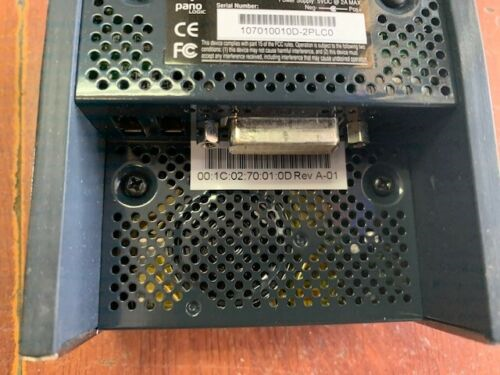
The Rev A G2 has a significantly different PCB layout than the Rev B and C. The compatibility of the Rev A with the Rev B and C is currently unknown.
The device revision should be printed on a sticker on label with the MAC address.
Steve Gagnon found what is apparently an early prototype Rev A on ebay.
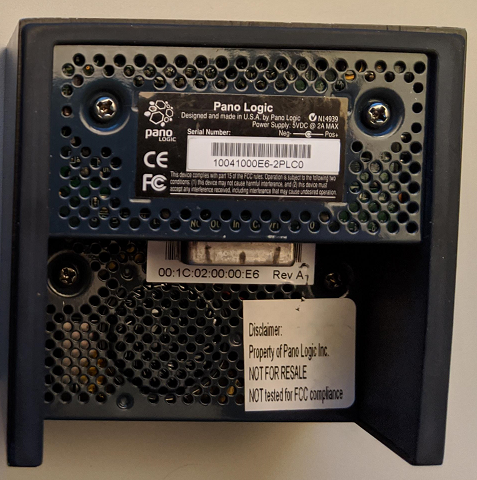


This is a very rare model of the Pano that apparently existed between the first and second generation devices. The generation labels were assigned by the hacker community not Pano and we didn't know much about these devices when the names were picked. Hence this device is now generation 1 plus.
The model is very similar to the G2 device, but it only support a single DVI monitor.
The JTAG connector pinout is the same as a G2. The power supply connector is the same as a G1.


This is an 22 in LCD monitor with a built in Pano device similar to the G2.
Links
- Zeljko Stevanovic's reverse engineering project with pictures of the controller.
- Skip's reverse engineering project.
- Brief video showing how to open it.
This is an 19 in LCD monitor with a built in Pano device simular to the G2.
This one is so rare that I can't even find a picture of one on the Internet,
I wonder if it was actually produced.


This model is assumed to be a first generation in a rectangular sheet metal box rather than the usual die cast cube. This assumption is based on the 3 USB ports and VGA connector.
These found their way to ebay in 2023. The seller couldn't even find a model number on them. He had more then 10 which were in new in the original Pano box.

